Creativity. It’s ours to develop.
At creative agencies like Quarry Integrated Communications, their clients expect them to produce creative work. Creativity is simply expected from a firm that produces award-winning marketing communications. So who is responsible to create this work? A select group of talented individuals are often referred to as ‘creatives’ (a throwback to the old ad agency days). Does that mean only these people have the capacity to be creative?
What about an organization filled with scientists (I visualize people walking around in white lab coats, constantly muttering quietly to themselves, or just sitting at their desks staring into space), are they alone responsible for the creation of new products? Is creativity limited to only a select few?
What about a receptionist, or the newest employee who just graduated college? If an accountant is considered creative, is that considered bad (would you trust their numbers)?
Creativity is often considered a desirable attribute; providing it comes from those whom it is expected, and in a familiar form – which almost sounds like an oxymoron. Maybe it’s time to reconsider what this attribute – or core Value – really means.
First, let’s look a few definitions of Creativity:
- The ability to create or invent something (Wiktionary).
- Mental characteristic that allows a person to think outside of the box, which results in innovative or different approaches to a particular task (BusinessDictionary.com).
- Involving the use of the imagination or original ideas in order to create something (Oxford).
- A mental process involving the discovery of new ideas or concepts, or new associations of the existing ideas or concepts, fueled by the process of either conscious or unconscious insight. (Wikipedia).
Creativity is clearly about discovering or creating something ‘new.’ It is closely associated to innovation. But perhaps the most useful definition of creativity comes from an unexpected source, a tutorial service for those studying English in Hong Kong, where they suggest:
- Creativity: The capacity to produce something which is both unique and useful (ITS Tutorial School).
Note the reference to the term capacity. This would suggest that anyone who has the capacity to discover and/or create something new (tangible or intangible) can be considered a ‘creative.’ Does that include everyone? Sure. Just watch children when they play together and their seemly endless capacity to create new games or scenarios that engage other children. This would suggest almost everyone has the capacity for creativity, even if it becomes a bit rusty. The term used in business to foster such child-like behavior is called collaboration, where working effectively with others can enhance the capacity for creativity.
The other reference in this definition of creativity is the discovery/creation of something both unique and useful. While many people can discover/create something unique, it is not so easy to ensure it is relevant and useful to a target audience. One site History of Useless Inventions highlights many items that are clearly unique but not very useful.
For most of us who spend many hours each day trying to add value to our customers and/or our own organization, there are two questions regarding creativity that we can ask ourselves:
- Do I possess the capacity to discover or create something new (i.e. a new idea)?
- Is what I produce (tangible or intangible) considered unique AND useful to others?
Someone who claims to be creative would answer yes to both questions. But if we are like most people, we would answer ‘yes’ to the first question and ‘occasionally’ to the second one. The biggest gap in demonstrating creativity is the discovery or creation of something new that is unique and useful, as this requires a deep understanding about the people who will use or experience your new ‘creation.’
The irony is that this gap can be often addressed easily through simple insight gathering techniques, as referenced by Quarry’s Tony Mohr in his blog Small numbers can yield big customer insight or in the other customer insight-related blogs posted on Quarry’s Idea Exchange. Ask good questions and listening carefully, even to just a few customers, will provide useful insight into knowing if something new will be considered unique and useful.
Why then do so few people engage in the gathering of customer insight? Should this exercise only belong to a select few? Or should everyone be responsible for gathering relevant insight that will fuel their own creativity? Maybe there is a link between those who value creativity and those who value insight that will lead to something new that is unique and useful.
If we look at the other people that work at a creative firm like Quarry, either inside the organization or as strategic partners, which ones do we consider as creative? There’s a good chance that if someone brought you something ‘new’ but you didn’t consider it useful, then you begin to doubt their creative capacity. However, if we truly value creativity and believe that everyone has the capacity, then we can help foster this powerful attribute by encouraging an environment of collaboration and insight gathering. Just like children, creativity is ours to develop.
Note: This post is adapted from the original post published for Idea Exchange.


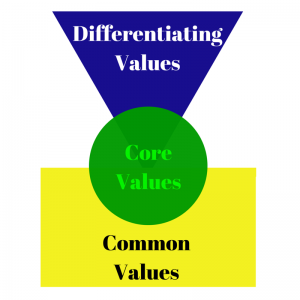

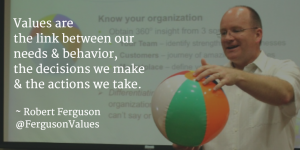
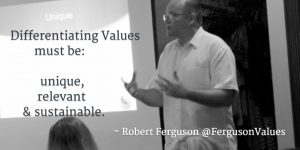
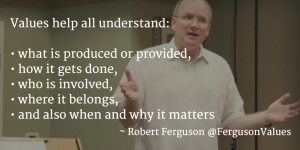
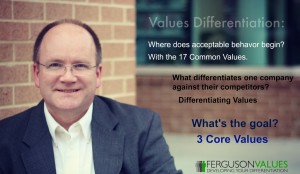
Check out http://www.TC2.ca -thoughts on critical and creative inquiry.
I attended a conference “Thinking and Learning in the 21st Century”; Garfield’s presentation linked well to the discussion of what is ‘creative’. I don’t yet have a copy of his presentation, else I’d forward you the pertinent slides. His site, TC2 may lead you to some new or corroborating evidence.
Thanks for sharing, Heidi. Looking at the Consortium’s Overarching Aims, I particularly like the last one: “nurture students willingness to act in thoughtful, responsible ways.” That’s something worthy to develop!